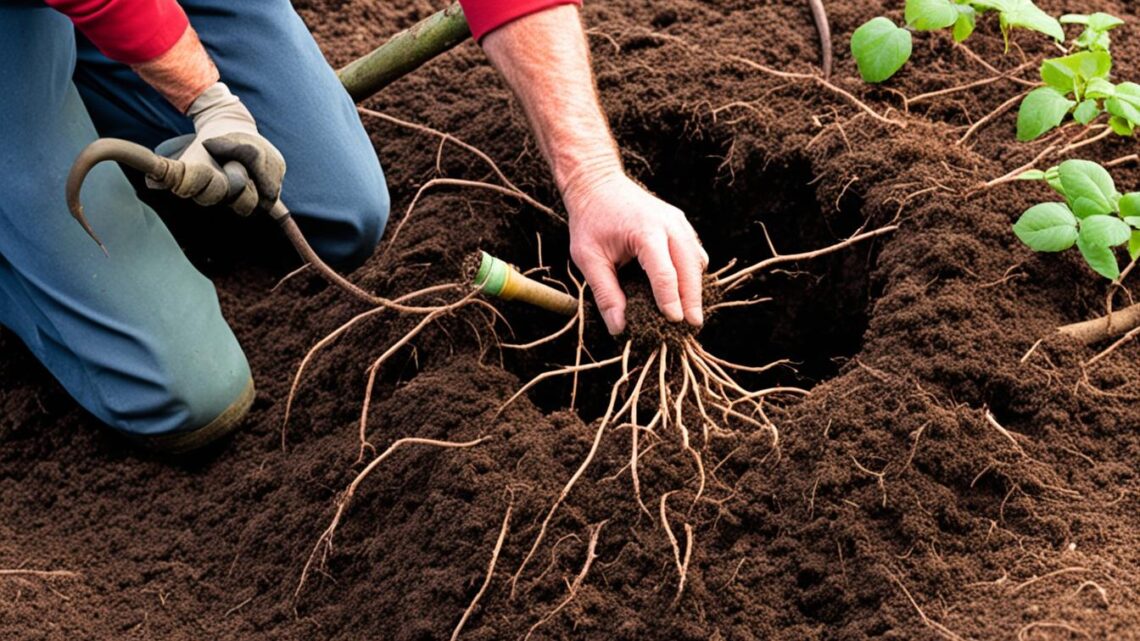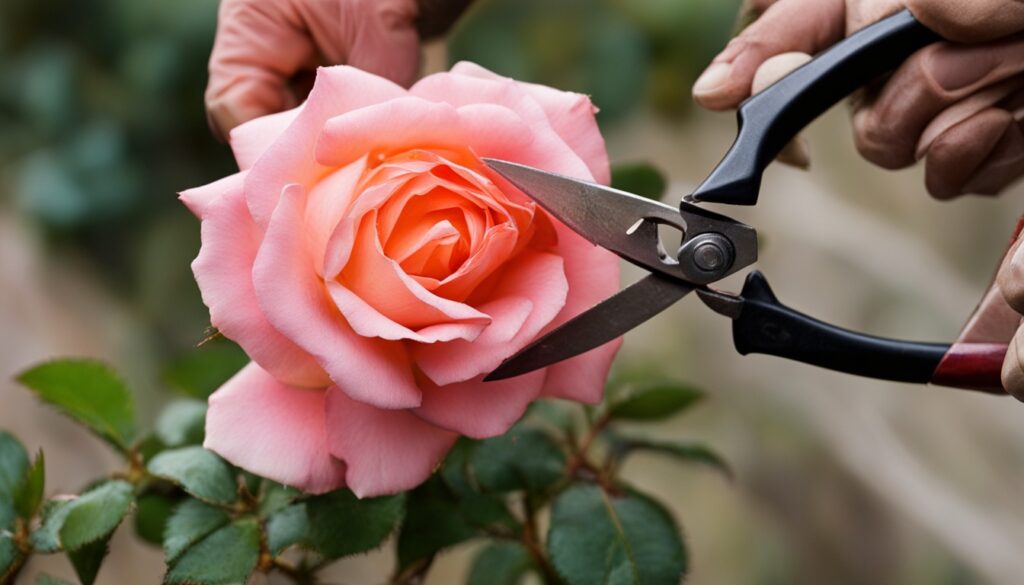
Are you keen to make your garden more beautiful and aromatic with climbing roses? These flowers are not only lovely but versatile too. They grow well from bare roots, but the planting process may seem mysterious.
In this guide, we will show you how to plant your bare root climbing rose step by step. This method ensures your rose thrives right from the start.
To give your rose the best start, here are some easy steps to follow. First, pick a sunny spot with at least 4 hours of sunlight each day. Make sure it also has enough room to spread out and the structure for it to climb, like a trellis or a wall.
Climbing roses can adapt to different planting and training techniques. The best time to plant them is from January to May, avoiding very cold or wet times. You’ll also need a few gardening tools, such as a spade and fork, as well as some soil help, like manure and fungi, for a healthy start.
IN THIS ARTICLE
ToggleUnderstanding Bare Root Climbing Roses
Bare root roses are sleeping plants sold without soil around their roots. They can only be planted in the dormant season, usually from January to May. This varies based on where you live. Planting these roses is a great choice because they are cheaper, easier to move and plant. They also grow strong roots in their new home.
What Are Bare Root Roses?
Bare root Roses are sleeping plants without soil around their roots. You can only plant them in the dormant season, from January to May, depending on your area.
Benefits of Planting Bare Root Climbers
The benefits of bare root Climbing Roses are many. They’re cost-effective, easy to move and plant, and they grow strong roots quickly. Bare root climbers are often healthier and do better than those grown in pots. They make a lovely, fragrant addition to your garden.
Selecting the Ideal Planting Location
Choosing the best place for your bare root climbing rose is key. Think about its need for sunlight, the space it requires, and the support it needs for vertical growth.
Sunlight Requirements
Climbing roses need 4 hours of direct sunlight daily to grow well, but more sun is even better. In very hot areas, they might benefit from some afternoon shade to avoid damage to their leaves and flowers.
Spacing Considerations
Make sure your climbing rose has plenty of space to grow without much competition from other plants or structures. They need room for their shoots to spread and build a strong structure while climbing.
Supporting Structures for Climbing Roses
Your climbing rose will need a strong trellis, arbor, or wall to grow on. Think about the type of climbing rose you have and its eventual size and shape. This choice helps the plant grow well and show off its flowers beautifully.
When to Plant Bare Root Climbing Roses
Bare root climbing roses should be planted from January to May, depending on where you live. This is known as the dormant season. It’s the best time because the roots get a head start before the plant’s active growth.
It’s not good to plant them when the ground is frozen or too wet. This can hurt how well they grow.
| Planting Time | Growing Zones | Conditions |
|---|---|---|
| January – May | All Zones | Ideal for planting bare root climbing roses |
| Frozen or Waterlogged Ground | All Zones | Not recommended for planting |
To get your climbing roses off to a great start, plant them in the right season. This helps the roots grow well in preparation for a good growing season.
Always look at your growing zones and local weather to pick the best planting time. This will help your roses grow and bloom beautifully.
Essential Tools and Materials
To plant a bare root climbing rose, gather some essential tools. You need a spade, a fork, and a watering can. These help you get the planting site ready and your rose watered. Don’t forget a big bucket for soaking the plant’s roots. This step is crucial to giving your rose planting tools a boost.
Gardening Tools
You’ll need certain garden tools for a bare root climbing rose. A sharp spade is for digging the hole, a sturdy fork turns the soil, and a watering can saturates the roots. These rose planting tools are key for a successful setup.
Soil Amendments
Boost the soil for the rose with well-rotted manure and mycorrhizal fungi. Adding these soil amendments to the planting hole gives the rose a good start. This mix will help the roots grow strong in their new spot.
Step-by-Step Guide to Planting
To start, soak your bare root climbing rose in water for at least 2 hours. This makes sure the roots are fully hydrated. Next, use a fork to loosen the soil where you’ll plant it. The hole should be about 16 inches wide and 16 inches deep. Remember to mix in some well-rotted manure.
Preparing the Planting Hole
It’s important to prepare the hole well for your Bare Root Rose Planting. Loosening the soil and adding organic matter helps the roots grow strong. This gives your plant a great start.
Positioning the Bare Root Rose
Put the Positioning Bare Roots rose plant in the middle of the hole. Angle the stems towards where they can climb. Also, spread the roots out well. This position helps the plant grow healthy.
Backfilling and Securing the Plant
After placing the rose, fill the hole with soil and press down gently. This removes air pockets. Then, water the plant well. Doing this after planting helps the Bare Root Rose Planting settle in nicely.
Watering and Aftercare
Watering your bare root climbing rose correctly is key. For the first 1-2 weeks after planting, water daily. This keeps the plant hydrated as it begins growing. You should then water less often but enough to keep the soil moist, not soggy.
To further help your rose, add a 2-4 inch layer of Mulching at the plant’s base. Mulch keeps the soil moist, prevents weeds, and adds nutrients when it breaks down. This layer also helps regulate the temperature, creating a better environment for the rose to grow.

Climbing Roses for Vertical Gardening
Climbing roses are great for vertical gardens. They offer a beautiful and sweet-smelling sight as they climb. Imagine them decorating trellises, arbors, or walls. These plants can really elevate your outdoor area, adding beauty, height, and grace.
Varieties to Consider
For your vertical garden, think about roses like ‘Blossomtime’. It’s pink with a strong, upright look. ‘Cecile Brunner’ is another beautiful choice, known for its delicate pink and graceful shape. Then there’s ‘New Dawn’, which has big soft pink blooms. These climbing rose varieties are ideal for vertical gardening. They come in different colors and shapes, fitting your unique style.
Training Techniques
Training your climbing roses correctly is crucial. It helps them reach their vertical potential. As the canes grow, gently tie them to their support to encourage climbing. Keep the plant in shape by removing too many canes and deadheading old flowers. This encourages new blooms all season.
Choose the right climbing rose varieties and train them well for a spectacular vertical gardening show. With the perfect roses and care, your outdoor area will be taller, smell lovely, and look fascinating.
Rose Care and Pruning
Right rose care and pruning keep your climbing roses healthy and blooming. Removing old blooms, or deadheading, triggers new flowers to grow. This way, you enjoy beautiful blossoms all season long.
Deadheading for Continuous Blooms
Deadheading your climbing roses makes them focus on new flower buds, not old flowers. It’s a simple trick that keeps your rose bush covered in blooms from spring to fall.
Pruning Established Climbers
For climbing roses that are already established, prune them in late winter or early spring. This means cutting away some of the old canes to let sunlight and air reach more areas. It also helps shape the rose to look the way you want and encourages new blooms.

Troubleshooting Common Issues
Your bare root climbing rose might face challenges, even with the right care. It could get attacked by bugs like aphids or rose beetles. Also, it might catch diseases such as black spot or powdery mildew. Deal with these problems fast using the right organic or chemical pest control. Always follow the instructions on the products you use.
Dealing with Pests and Diseases
Spotting pest or disease early in your climbing rose is crucial. Check your plant often for aphids, rose beetles, or diseases. When you see them, don’t wait. Use eco-friendly pest control or fungicides that work. Make sure you follow the directions on these products.
Reviving Struggling Plants
Is your climbing rose not doing well? Check if it’s planted too deep, not getting enough water, or damaged by bad weather. To help it bounce back, trim any bad parts and give it extra care. Often, a little extra attention can help a struggling rose start growing well again.
Design Ideas with Climbing Roses
Climbing roses are great for adding beauty outdoors. They make your garden look more interesting, especially if you place them by gates or on walls. You can use them on structures like arbors or trellises to highlight an area.
Using climbing roses with other plants can really make your garden pop. Choose plants like vines or perennials that like shade. By mixing these with the roses, you create a beautiful place that smells nice too.
If you carefully place and guide your climbing roses, they’ll turn your yard into a stunning space. This can add layers, softness, and more natural appeal to your overall design.



